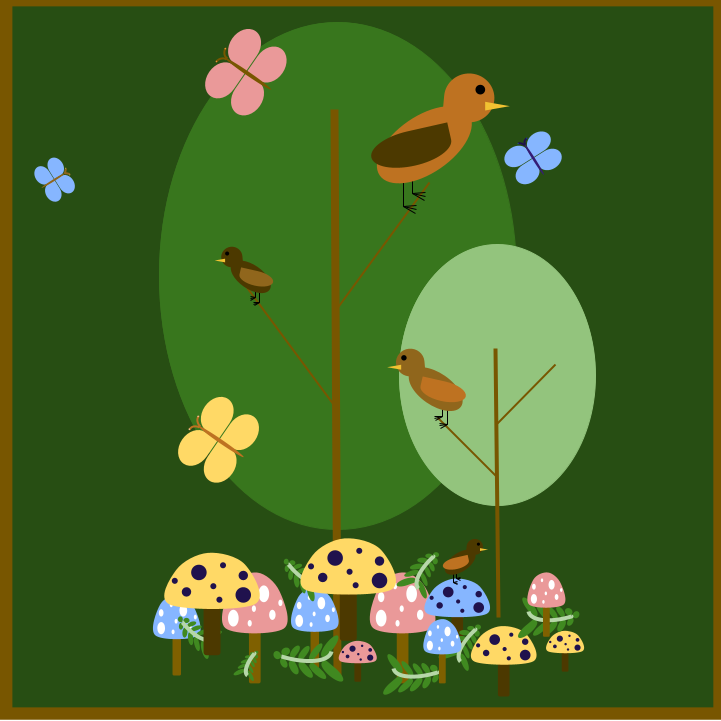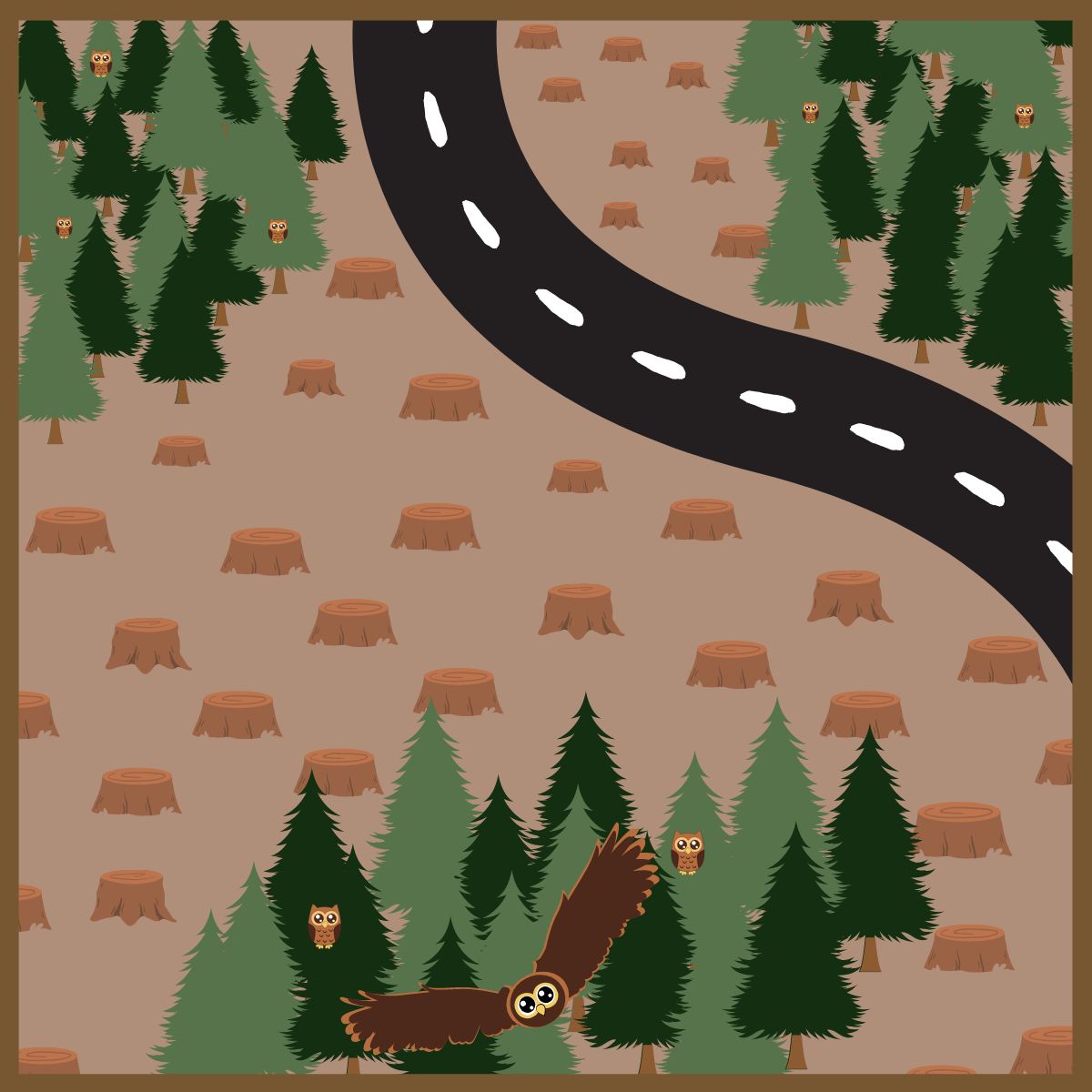Photo Courtesy of Ashish Gupta
So, Why Should We Care About Biodiversity?

First and foremost, biodiversity is needed not only to support society, but life itself! Without biodiversity, nothing on Earth would exist as we know it. Ecosystems are weakened by the loss of biodiversity, and the health of Earth’s ecosystems are directly related to the health of humanity.
Typically, the majority of the world doesn’t see the effects of the loss of biodiversity. For example, the cobalt mines in the Democratic Republic of the Congo that supply minerals for our cell phones destroy the surrounding habitat, but most people have no idea.[1] Western populations are usually more ‘sheltered’ from the effects of lost biodiversity, but as Earth’s biodiversity continues to wane, the entirety of life on Earth will feel its impacts.
Graphic Courtesy of Maureen Louie
Often we think “Oh no! What will happen to our food prices or cars?”, but these issues are minuscule in comparison to huge swaths of destroyed species and habitats. Humanity is by far the greatest perpetrator of lost biodiversity, yet all life on Earth pays the price for our actions.
An Introduction to Genetic Diversity
Genetic diversity refers to the variety of genes and mutations found in a species.[2,3] Through generations of a species, mutations (or chance changes in the genetic code) will naturally occur. Mutations are random and can have negative effects, positive effects, or, most frequently, no impact at all. However, impactful mutations allow species to adapt to their environments.
Due to mutations and the process of natural selection they trigger, species have some hope of surviving the drastic changes humans are inflicting on their environments through deforestation, pollution, and more. Unfortunately, the chances of a beneficial mutation drop as species become isolated because isolation commonly results in inbreeding, causing the same genes to be passed down and the species’ DNA to become less diverse.
Decreased genetic diversity can result in extinction. Genetic diversity lends itself to adaptation; higher genetic diversity means a better chance of a species adapting and surviving, while low genetic diversity means a higher risk of extinction due to the inability to adapt. Low genetic diversity is typically paired with what is called inbreeding depression, where animals are more likely to receive a harmful trait, lowering their health and life expectancy. The declined health in a species’ population and the failure to adapt creates a situation where extinction is much more likely compared to a highly genetically diverse group.[2,3]
Case Study: The Northern Spotted Owl

In the 1990s, the Northern Spotted Owl (an owl native to the Pacific Northwest) was added to the Endangered Species Act as “threatened.” The once-common bird now faces a 3.7% decrease in population each year despite the efforts of conservationists and the general public.[4] There are two main reasons for their endangerment: deforestation and the introduction of the Barred Owl into the region.
Old growth forests once blanketed the Pacific Northwest, but due to industrial logging, they currently make up a mere 20% of their original acreage.[4] These trees provided habitat for countless species, including the Northern Spotted Owl. Patches of old growth forests still exist, but they are disconnected from each other, resulting in what is called species fragmentation, when a species is separated into groups that are isolated from each other. This causes a loss of genetic diversity, a decrease in population, and more frequent inbreeding. As we discussed above, inbreeding especially decreases reproduction and survival rates.
Graphic Courtesy of Tracy Wilkinson
To make matters worse, starting in the early 1970s, the Barred Owl invaded the Northern Spotted Owl’s territory.[4] The Barred Owl, a native to North Eastern America, has traveled over decades to the West, and its introduction to the Northern Spotted Owl's habitat has significant consequences. First, the Barred Owl is less susceptible to diseases and consequently has a higher rate of survival, threatening the Northern Spotted Owl’s access to the little remaining suitable habitat.[4] The Barred Owl also has a higher rate of reproduction and survival, furthering the ‘leg up’ on its competitors.
There have already been instances of breeding between the species, which does increase the survival rate for the offspring of the Northern Spotted Owl, but the Northern Spotted Owl may no longer be its own species in a few decades if the hybridization continues and the isolated groups’ survival rates decrease at the same rate.[4] An increase in inbreeding has also been observed due to the introduction of the Barred Owl, stunting the adaptability of the species. More drastic conservation measures may be required if the Northern Spotted Owl species is to survive.
[1]Buxton, Abbi. "Mining cobalt better." Sustainable markets, International Institute for Environment and Development, 29 Sept. 2021, www.iied.org/mining-cobalt-better#:~:text=It%20also%20provides%20an%20income,to%20water%20and%20air%20pollution.
[2]Minter, Melissa, et al. "What is Genetic Diversity and Why Does it Matter?" Frontiers for Young Minds, 9 Dec. 2021, kids.frontiersin.org/articles/10.3389/frym.2021.656168.
[3]"What is genetic diversity?" imet, Institute of Marine and Environmental Technology, 18 May 2020, imet.usmd.edu/activities/what-genetic-diversity#:~:text=Genetic%20Diversity%20refers%20to%20the,to%20adapt%20to%20changing%20environments.
[4]Andre, Claire, and Manuel Velasquez. "The Spotted Owl Controversy." Santa Clara University Education, Markkula Center for Applied Ethics, 15 Nov. 2015, www.scu.edu/environmental-ethics/resources/ethics-and-the-environment-the-spotted-owl/.
Learn More!
Logging Fungal Networks Climate Change Carbon Storage Solutions & News Connections